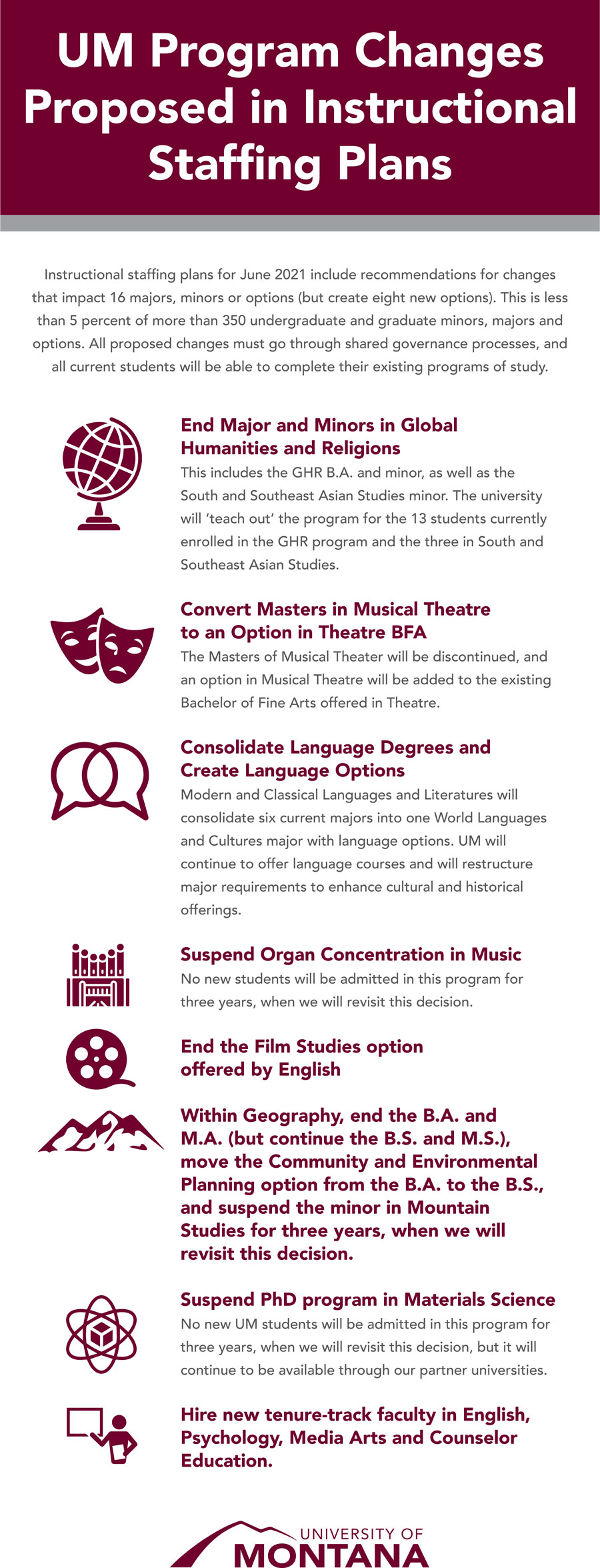UM on the rise
The Backstory
Soon after starting as UM Provost, Jon Harbor started a process to determine instructional staffing budget targets for each academic unit. Once the budget targets were set, the Provost asked academic units to create instructional staffing plans to meet them within three years’ time. This is a new approach for UM; most of our budgeting has centered on what happened last year, rather than looking ahead to the future.
The purpose of planning for the future was twofold: it helped academic units make realistic projections to meet their budget targets, and it helped the administration invest in a handful of programs with potential for growth.
The process Provost Harbor set out was based on a lot of work that had already taken place at UM, by the University Planning Committee in spring 2018, and by the entire campus, which participated in the Academic Program and Administrative Services Prioritization effort in 2017. More detailed information on the Provost's instructional staffing budgeting and planning process is available on the Provost’s organizational and staffing changes webpage.
Instructional Staffing Plan Highlights
The quality of the plans is a testament to the hard work department chairs and deans put into the planning effort. Academic units approached planning in a variety of ways, including making retention of junior faculty a priority, and many contributed selflessly to the attainment of that goal. Programs made a variety of adjustments in order to meet their budget targets, such as:
- Combining low-enrolled class sections to teach fewer sections and meet the same curricular needs (requiring fewer faculty);
- Offering low-enrollment electives on a rotation basis or even reducing the number of electives offered, including where courses in other programs can meet program requirements;
- In some cases, sharing courses across departments, to reduce duplication; and
- In some cases, increasing some faculty teaching loads and reducing course buy-outs and teaching releases.
Plans to meet budget targets include both reductions in spending as well as income-generating strategies. These align with Provost Harbor’s goals to expand UM’s summer programs and significantly increase UM’s online offerings. In planning for the future, UM’s academic units ar charting a path for adapting and innovating in their curriculum to ensure quality, and meet students' interests and needs.
Dollars and Sense
Academic programs across campus have made notable and difficult sacrifices to help ensure UM remains an institution centered on our students, educational quality, and outstanding research and scholarship. Previously, non-academic departments made sacrifices, often in the form of deep reductions. Now, we are making the necessary $5 million cuts to the Academic Affairs Instructional Staffing budgets.
In many cases, the multi-year planning process has provided a platform for excitement about the future. For example, the English Department has advance knowledge of planned faculty retirements, and so the department’s plan includes five hires of tenure-track faculty over the next several years to ensure continued vitality and strength in creative writing, English education, and literature. Some programs that have had significant growth, even though overall university enrollments were declining, have received additional resources.
We would like to acknowledge the many who have invested their time and energy into making smart choices so that we were able to keep the impacts on academic programs to a minimum. We also commend UM faculty who have already expressed interest in designing summer and online programs as part their units’ plans!

